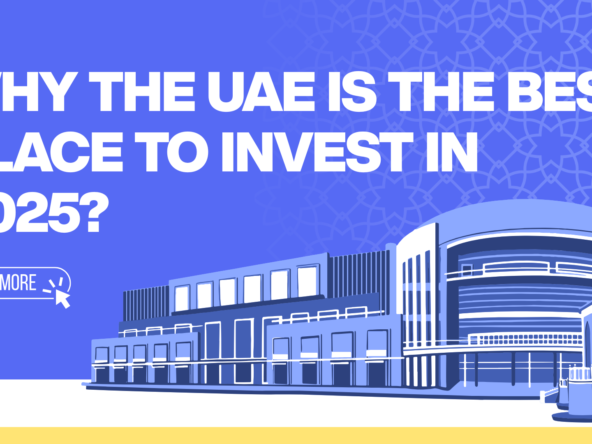Purchasing your own home is a significant and life-changing decision that requires careful consideration. Since this choice impacts your long-term future and represents a major financial commitment, it’s essential to make a well-informed decision. You should thoroughly understand the entire process, as well as the potential benefits and drawbacks of buying a home, to ensure you make the best choice for your circumstances.
There are two main paths to purchasing a home: buying outright or opting for a mortgage. Many people lack sufficient knowledge about property purchases and believe they must save a large sum of money to buy a home outright. However, this is not the only option—mortgages provide an alternative by allowing buyers to pay in installments, making homeownership more accessible.
The rent-to-own scheme is an excellent way to purchase your own home, especially for first-time buyers. This innovative approach makes the buying process smooth, stress-free, and more accessible by allowing you to rent the property first while working toward ownership. With flexible payment options and a clear path to securing your home, it’s a smart and practical choice for those looking to transition from renting to owning.
If you’re unsure whether to choose a rent-to-own agreement or a traditional mortgage, the comparison below outlines the key differences between the two options to help you make an informed decision.
How does the rent-to-own process work?
The rent-to-own process offers a modern alternative to the traditional home-buying method, providing relief for buyers who struggle with the complexities and challenges of conventional purchasing. This flexible approach simplifies the path to homeownership, making it more accessible and less stressful for potential buyers.
In a rent-to-own agreement, the buyer and seller sign a contract, typically lasting 2 to 5 years, where the buyer lives in the home as a tenant while working toward ownership. During this period, a portion of the monthly rent payments is credited toward the future purchase price, helping the buyer accumulate equity until they can secure full ownership.
Under a rent-to-own agreement, a portion of the tenant’s monthly rent payments is set aside as credit toward the future purchase of the property. This makes buying a home more manageable, as it reduces the financial burden by gradually building equity over time.
Why It’s Good for Sellers
If you’re considering a rent-to-own arrangement, potential buyers can explore available listings or negotiate an agreement directly with the current homeowner. Fortunately, this system is not a rigid obligation for the landlord, as it offers flexibility for both parties. The benefits are mutual—buyers gain a clear path to homeownership while building equity, and landlords secure steady rental income with the potential for a future sale.
Another key advantage of the rent-to-own scheme is that it provides an ideal solution for landlords who are hesitant about selling their property outright or wish to maintain it as an income source. This arrangement allows them to earn rental income while securing a potential future sale, addressing their needs, and helping tenants transition to homeownership.
The rent-to-own scheme eliminates many challenges of traditional property purchases, such as high upfront costs, brokerage fees, and the risks associated with buying a home. For landlords, it provides a steady stream of rental income while securing a committed buyer for the future. Additionally, they can often charge a higher rent in exchange for the eventual purchase opportunity. This makes rent-to-own an ideal option for property owners who want to transition out of long-term rentals while ensuring a profitable and hassle-free exit strategy.
Now that we’ve examined how the rent-to-own process works, let’s compare it with the traditional mortgage approach to understand its key differences.
How does the mortgage process work?
When you want to purchase a home in Dubai, the first thing that comes to mind is how to arrange the full amount for the property at once, which can be a significant challenge. There are two types of properties: off-plan and ready-to-move. If you buy an off-plan property, you pay the amount in installments according to the developer’s payment plan. However, when purchasing a ready-to-move property, you must either pay the full amount in cash or opt for a mortgage. In the case of a mortgage, you typically need to make a down payment of 20 to 25% of the property’s value.
For those familiar with mortgages, the process can be straightforward, but for newcomers to property purchasing, it can be challenging to understand. Many first-time buyers find the mortgage system complex, especially when navigating down payments, interest rates, and approval requirements. Without prior experience, the steps involved—such as documentation, bank evaluations, and repayment terms—may seem overwhelming. Proper guidance and research are essential to make the process smoother for those new to real estate investments.
Getting a mortgage is not an overly difficult process, but you must meet certain requirements. Expats can also apply for a mortgage in Dubai, provided they submit the necessary documents, including proof of income and residency. Typically, banks require applicants to show that they have been residing in the UAE for at least 6 to 12 months. Additionally, a stable income, a good credit history, and a down payment (usually 20-25% for expats) are key factors in securing approval. With the right documentation and eligibility, obtaining a mortgage can be a smooth and achievable process.
Upsides of choosing a mortgage
Opting for a mortgage offers several advantages for property buyers. Unlike renting, the mortgage process allows you to own the property outright once the loan is fully repaid. Depending on your financial situation and mortgage terms, you may also qualify for tax benefits related to your mortgage interest payments. Additionally, mortgages provide flexible payment options, allowing you to choose a repayment plan that best suits your budget and long-term goals. This makes homeownership more accessible and financially manageable.
Understanding the difference: rent-to-own vs. mortgage
Is rent-to-own a good option? Like any major financial decision, this approach comes with both advantages and drawbacks. Whether the rent-to-own scheme makes sense for you ultimately depends on your specific circumstances and long-term goals. The true value of this arrangement can only be assessed by carefully evaluating your situation and the terms of the agreement.
The traditional method of buying a home typically involves securing a mortgage. However, those with strong financial resources often achieve better outcomes, as they can negotiate favorable terms, avoid interest payments, or even purchase properties outright.
Obtaining a mortgage comes with several challenges for buyers. First, securing loan approval can be difficult, especially without strong credit or stable income. Even after qualifying, buyers must negotiate with sellers to get the property at a fair price. The entire mortgage process involves multiple steps—from documentation to approvals—which can often be complex and time-consuming for potential homeowners.
For buyers struggling to qualify for a traditional mortgage, the rent-to-own scheme presents a viable alternative worth considering. This approach offers key advantages: it accommodates lower credit scores, requires only a minimal down payment, and eliminates the need to pay the full property amount upfront. Rather than facing immediate large financial commitments, buyers can gradually work toward ownership while living in the home.
The rent-to-own approach gives you a unique advantage: it allows you to secure your dream home immediately while working toward full ownership. You lock in the property upfront, eliminating the risk of losing it while you save. In contrast, with a traditional mortgage, even after saving for a down payment, there’s no guarantee your ideal home will still be available on the market when you’re finally ready to buy. Rent-to-own provides both security and time to prepare financially without fearing missing out on your perfect property.
However, you should be aware that rent-to-own agreements typically involve higher monthly payments than traditional rentals. This is because a portion of your rent is credited toward the future purchase price of the property. Additionally, as the tenant, you’ll be responsible for maintaining the property, including all sanitation and repair work during the rental period.
Ultimately, the rent-to-own scheme offers distinct advantages over traditional mortgages for many buyers. However, the final decision depends entirely on your circumstances and financial goals.



